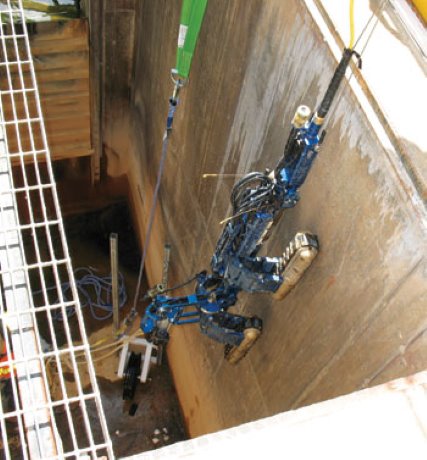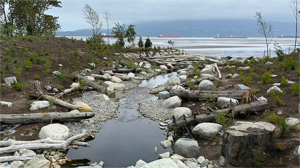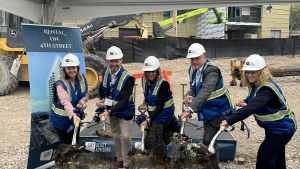Although they aren’t a visible part of our public infrastructure, Canada’s sewer systems are important. And, like the crumbling roads and bridges we read about, sewer pipe is subject to wear and tear that needs to be maintained.
Although they aren't a visible part of our public infrastructure, Canada's sewer systems are important.
And, like the crumbling roads and bridges we read about, sewer pipe is subject to wear and tear that needs to be maintained.
Ashley Rammeloo, sewer operations engineer, City of London, Ontario said the typical life span of concrete sewer pipe is between 80 and 100 years, although there is brick pipe in London that is 150 years old.
“Sewer systems are a critical piece of urban infrastructure,” Rammeloo said. “And inspection of sewer pipe is critical.”
Concrete sewer pipes are vulnerable to corrosion, said Mark Omelaniec, president of B.C.-based The Langley Concrete Group.
Omelaniec said concrete pipe corrosion has worsened in the last 60 years as Canadian homes use more hot water.
Dishwashers, clothes washers and increasingly efficient hot water heaters have resulted in high-temperature waste water being discharged into the sewer system.
One of the results of all this hot, turbulent water is the rapid creation of hydrogen sulphide gas.
The H2S gas helps to create a bacteria in the pipes that feeds off the limestone in the cement, leaving a corroded surface that eventually is void of cement paste, the binder that gives concrete its strength.
In time, the bacteria will eat through the cement and the concrete will eventually fail.
The pipes need to be inspected before such a failure takes place.
Colin Dobell, president of Nanaimo-based Inuktun Services Limited, said pipe inspection used to be a simple affair.
“You could walk through the big pipes with a flashlight, after diverting the flow, and inspect the walls,” he said.
“With smaller diameter pipes that a human couldn’t enter, you waited for a problem to occur and then started digging at its most likely location.”
Over time, plumbing and construction companies, which were the entities most often responsible for pipe inspection, began sending crawler-mounted video cameras underground.
The cameras had an attached cable to transmit the signal back to the operator on the surface.
Like other forms of technology, pipe inspection has become better over time.
“Cameras have become smaller and the video signals transmitted over the cable have improved,” Dobell said.
“Most of the improvements in pipe inspection technology have been driven by improvements in consumer applications of video technology.”
Most of the crawlers that haul the cameras and cables along the pipe use wheels, although some, including Inuktun’s, use tracks.
“The next generation of crawlers are completely autonomous, without cables,” Dobell said.
Pipe penetrating radar is the underground in-pipe application of ground penetrating radar (GPR).
Csaba Ekes, president of Burnaby-based SewerVUE Technology Corp., which uses the technology, said GPR is “the closest thing to Superman’s X-ray vision.”
Ekes said GPR produces high-resolution three-dimensional images that enable municipalities to see through concrete pipes and measure actual pipe wall thickness, rebar cover or locate voids outside the pipe.
It also gives useful information about the quality of the pipe material.
“When the wall of a concrete pipe becomes corroded, the pipe gets thinner and can eventually collapse,” Ekes said.
“SewerVUE gives municipalities the information they need to make intelligent decisions about whether and when to replace sewer pipes.”
Ekes said the fundamental principle of GPR is the same as that used to detect aircraft overhead.
“But with GPR the antennas are moved over the surface rather than rotating over a fixed point,” he said.
The Langley Concrete Group’s Omelaniec said laser profiling is an up-and-coming inspection technology that is rapidly catching on in the U.S.
“It can be used to inspect traditional pipes like concrete and measure accurately cracks and joint gaps,” he said.
One of the providers of laser profiling in sewer pipes is Maverick Inspection Ltd. of Sherwood Park, Alberta.
Maverick’s laser profiler is a stand-alone, snap-on tool that is used with a CCTV camera to collect survey data and create pipeline reports.
Laser profiling can determine a pipe’s structural shape, cross-sectional area and defects; estimate debris quantity; calculate pipe capacity before and after cleaning; and verify the state of a pipe’s lining.
The technology works by projecting a ring of laser light onto the internal pipe surface.
As the CCTV camera moves down the pipe, the laser image is in its field of view.
Laser profiler software analyzes the ring of light to build a digital pipe profile.
“Unlike visual-only pipe inspection, laser profiling actually measures and quantifies the information it collects in a pipe,” said Maverick operations manager Warren Tessari. >>>











Recent Comments
comments for this post are closed